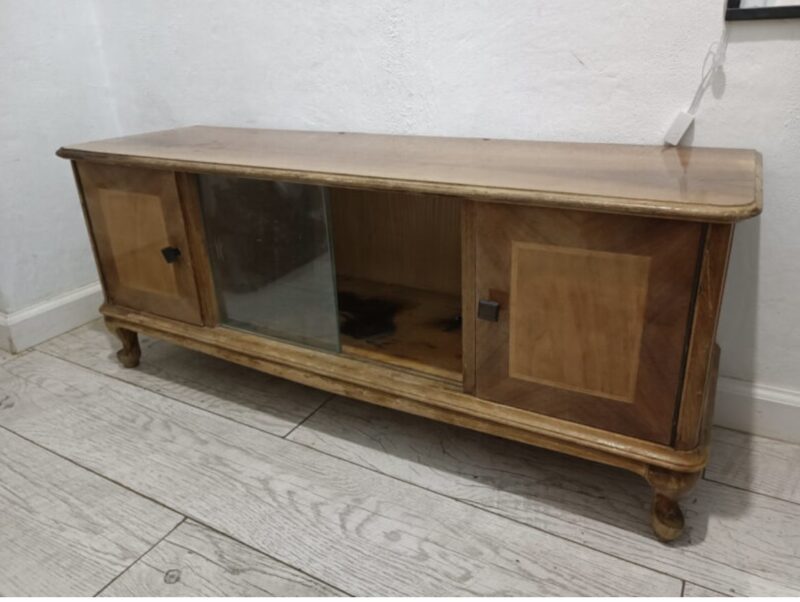It all started when I noticed that old piece of furniture near the trash cans during my daily walk. At first glance, it looked like it had been through the wringer—chips of varnish flaking off, the finish damaged from years of wear, and greasy stains scattered across its surface. The wood underneath wasn’t even that smooth anymore; it was scarred and cracked, looking like it had weathered countless storms. Most people probably would’ve just walked right past and left it behind, but I saw something more—a piece with potential hidden beneath its tired exterior.
Despite the battered appearance, the furniture’s old-fashioned design still held a certain charm that drew me in. It had a simplicity, a style that felt both nostalgic and elegant. I felt an inexplicable connection to it and decided right then and there to give it a new life, to restore it to its former beauty—and maybe even enhance its character. So, I carefully lifted the glass doors—delicate, fragile, and not quite fitting with the rest of the piece—and set them aside. With a little patience and a lot of determination, I began the process of cleaning and rejuvenating the wood.
The surface was coated in layers of grime and old wax, which I worked to remove thoroughly. It was a messy task—scrubbing, sanding, and going over every inch—each stroke revealing more of the wood’s natural grain. I kept thinking, “Can this really be saved?” The stains and cracks made me doubt for a moment whether the effort was worth it, but I pushed on. The patient work paid off when I finally saw the wood pattern beneath the grime; it was so stunning. The swirling grains and warm hues were too beautiful to hide behind years of neglect. I decided to offer it a chance to shine again by applying two coats of oil, which not only restored its shine but also highlighted the natural beauty of the wood, making it glow with depth and richness.
While the finish was absorbing the oil, I reinforced the back of the furniture with nails, making sure it was sturdy and secure. The years of use had weakened the structure a bit, but with a few well-placed nails, I restored its integrity. To add a protective layer, I applied a clear, colorless oil, which sealed the wood and preserved its glow. In that quiet moment, I could see the transformation unfolding—a piece of furniture brought back from the brink, radiant and full of life.
Now, for the doors—the part I paused over the most. I felt a hesitation about painting them. I didn’t want to erase their original character with a bold, modern color. I believed that solid, subtle hues might overshadow the furniture’s intrinsic value, making it look too much like a decoration rather than a treasured piece. Instead, I looked for inspiration in the traditions of Romanian furniture from the last century—an era when craftsmanship embraced intricate, handcrafted details and natural finishes. The designs from that period felt authentic and timeless, aligning perfectly with the style of this old piece.





